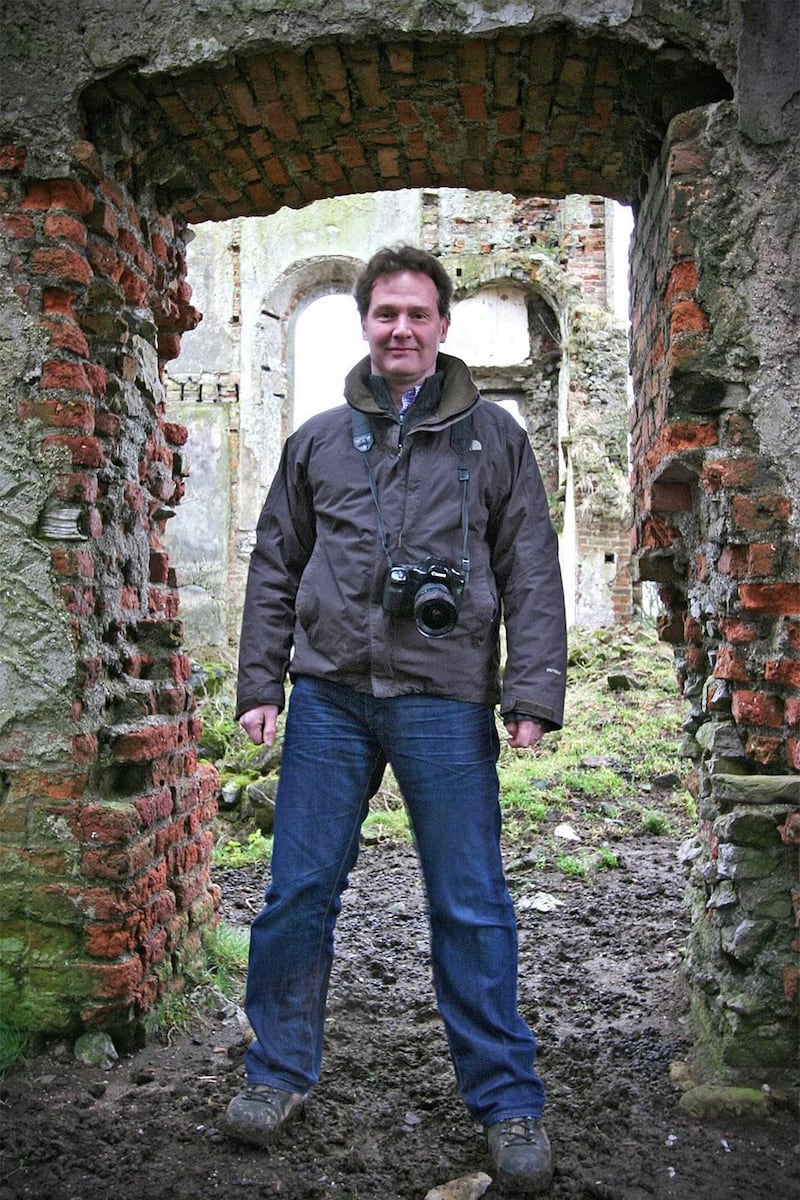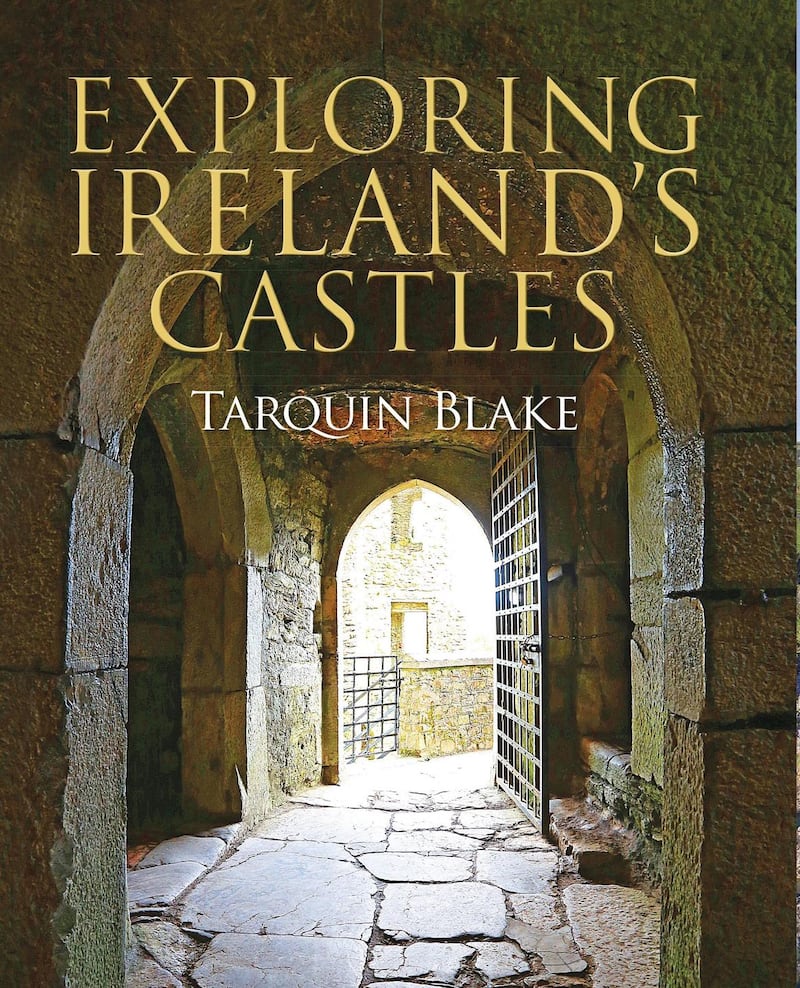The shots fire out from my Canon. A Canon camera, of course, no gunpowder required here. I am travelling around Ireland visiting and photographing its castles for my latest book, Exploring Ireland's Castles. It takes me two years to complete the book. The first year is all the legwork, the exploring and photographing. The second year involves the research and writing, libraries, books, maps, old manuscripts, and late nights typing and editing photographs. My journey takes me all over Ireland, from Co Antrim to Co Wexford. Through lonely ruins, family homes, as well as luxury hotels, each castle has its own story to tell.
Today I am at Menlo Castle, a few miles out of Galway city. It should feel homely to me, for this is where my Blake ancestors based themselves from the early years of the 17th century. In 1637, Sir Thomas Blake became the first of a string of Blake MPs and mayors of Galway, starting a substantial dynasty that spread throughout the county.
Peering through the lens, I see a decaying ruin, but imagine the staunch fortification that was once one of Galway’s finest. When I enter the castle, my eyes dart over its interior walls. Rubble and debris have filled the interior and years of abandonment hide much of its features. I see the outline of a vast fireplace, probably the centrepiece of what was once the castle’s kitchen. Further away I note the structure’s earliest components, machicolations and fortifications dating from medieval times when Ireland was a dangerous place and every self-respecting Irish chieftain and English gentleman alike housed themselves within the sturdy walls of a tower house.
0 of 5
Fighting a duel
In 1651, Sir Valentine Blake fought here against Cromwell's army. He survived, but was killed a year later while fighting a duel. Valentine was an expert marksman and when the pistols were drawn, he shot and mortally wounded his opponent. The dying man requested him to return and shake hands with him. This, however, was a trick and his adversary withdrew a concealed pistol and shot Valentine in the chest. On his death the Cromwellian government confiscated all the Blake lands in counties Clare, Galway and Mayo. It took the restoration of King Charles II, who was sympathetic to Catholics, to see the restoration of some of the Blake lands back to Valentine's widow.
I may not get another chance at this so the photographs need to be perfect
Rooks fly up from the castle chimneys, startling me with their kaah-kaahs. I explore the castle thoroughly, slowly making my photographs as I go.
Another day and another castle adventure. This time I am in Co Waterford, where I have arranged with Lord Burlington, son of the Duke of Devonshire, to visit and photograph the splendid Lismore Castle. The Duke's other family seats include Chatsworth House and Bolton Abbey, two of England's grandest houses.
Lismore Castle is positioned on a rocky precipice, towering over the river Blackwater. Its origins stem from Henry II’s meeting here with a council of bishops in 1171, and the castle that he ordered built that remained in use as an episcopal palace throughout the Middle Ages.

The present structure was largely started by Richard Boyle, first Earl of Cork, and was then extended, rebuilt and remodelled by his ancestors, who married into the Cavendish family, the Dukes of Devonshire. Today the castle gardens and its contemporary art gallery are open to the public, whilst the castle itself is available for private hire. Deep pockets are required because rental prices start at €50,000 per week. That may sound expensive but it does get you 15 bedrooms and the run of probably Ireland's grandest country house, manned by the Duke's own personal staff, and includes breakfast, afternoon tea and dinner daily.
Beauty and opulence
Beyond the entrance to the castle courtyard the gate closes behind me, and it feels like I have slipped into a little private world of beauty and opulence. Stout fortified walls on all sides; outside is Ireland, and inside is Lismore.
I draw out my tripod and take my time setting up the camera, testing different viewpoints in every room. I shoot in manual, adjusting the shutter and checking and rechecking my exposures. I may not get another chance at this so the photographs need to be perfect. The castle is quite simply breathtaking – it is not long before I have to put a new memory card into my camera.
I walk down to the banks of the river but rain forces me to hide out under Lismore Bridge
The windows frame incredible views that plunge down to the Blackwater. When James II stayed a night here in 1689, he opened a window and apparently almost fainted when he saw the vast drop to the river below.
The grandest bedroom, the Duchess’s Room, a vast three-chamber suite, was where Prince Charles and Camilla stayed during their private visit in 2004. The mattress on the four-poster bed indeed looks fit for a princess, and I doubt a pea would trouble their sleep.

Finally, I come to the banqueting hall, an elaborate medieval masterpiece created by the leading Gothic Revival architect, Augustus Pugin, who was also responsible for much of Westminster Palace. I struggle to frame the room with its huge stained-glass windows and long ecclesiastical choir stalls into one photograph. The wonderful gothic chimneypiece makes me smile. Showing the emerging trend of Celtic Revival, it bears the famous expression of Irish hospitality, Céad Míle Fáilte, or a hundred thousand welcomes. It was exhibited at the Great Exhibition of 1851 in Crystal Palace, London, before being installed at Lismore.
I explore a few more of the castle’s corners but am aware of the hours ticking past; dusk is approaching. I head out to explore and photograph the castle grounds. I walk down to the banks of the river but rain forces me to hide out under Lismore Bridge. Built by the fifth Duke of Devonshire in 1775, it towers over me and provides good shelter.
It has been a fascinating day of exploring and I feel hugely privileged. Writing and photographing my book, Exploring Ireland's Castles, is turning out to be one huge adventure and I can't wait for the next episode.
Exploring Ireland's Castles by Tarquin Blake is published by The Collins Press, price €29.99 collinspress.ie















